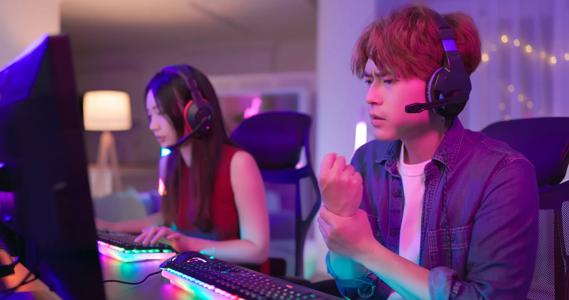Not enough evidence to link screen time to attentional disorders, but there is still cause for concern

A survey conducted among U.S. adolescents early in the pandemic revealed that average daily screen use was close to eight hours in a large, national sample. While this increase was likely tied to pandemic-related restrictions, some experts say there is reason to believe screen time use will never return to prepandemic rates.
Advertisement
Cleveland Clinic is a non-profit academic medical center. Advertising on our site helps support our mission. We do not endorse non-Cleveland Clinic products or services. Policy
There has also been recent speculation that prolonged screen time could have an effect on attentional disorders. Michael Manos, PhD, who leads the Center for Pediatric Behavioral Health at Cleveland Clinic Children’s, says there isn’t enough evidence to make that conclusion, but there is an increased need to counsel patients who experience difficulty maintaining focus and attention and their families on effective screen time management.
“There are a number of good studies on social media and ADHD, but it’s very difficult to establish causality,” he says. “ADHD is a genetic disorder and, subsequently, it’s not likely to emerge due to excessive screen time. Though certainly screen time could affect kids’ attentional activity with tasks that are of less interest.”
That’s not to say that screen time and certain social media platforms don’t elicit addictive responses. “When the brain is constantly stimulated, it wants to be stimulated again after the initial spike in euphoria wears off,” he says. “When you consider that some social media platforms are designed to hold attention with changing and sometimes provocative images, users are left looking for the next interesting thing to show up,” he explains.
This type of stimulation engages automatic attention, which is highly reactive to the changes in the environment and on screen. Whereas, directed attention, associated with concentration and task orientation, can be more challenging to activate — and this is true at any age.
But adolescence is a critical time for establishing individuality and developing connections with other people, says Dr. Manos. Learning social skills and developing self-reflection and self-understanding is difficult if one’s attention is constantly on a screen.
Advertisement
“You start looking at what your contribution to the world or to others is going to be. How do we fit into the overarching activity of life? What’s the initial contribution and how do we become meaningful to others?” And if you’re constantly in front of screens, guess what? You don’t have a chance to even consider those things,” he says.
So, what is the role of the clinician in managing a screen time addiction? It isn’t a diagnosable pathology. Internet gaming disorder is described in the DSM-5, which was published in 2013; however, it’s not recognized by the American Psychiatric Association as a diagnosis. The APA states more evidence is needed to determine if it’s a unique mental disorder and the criteria to classify it.
But it seems to be of growing concern to parents, who are looking for support on how to help manage addictive behaviors when it comes to screen time.
Dr. Manos recounts a patient and family he saw in his clinic. The patient was an older adolescent whose parents were concerned about his excessive screen time. He spent upwards of eight to 10 hours per day on screens, and his only social relationships existed online. After ruling out ADHD with a clinical assessment, Dr. Manos engaged the patient in a conversation about values — what’s most important to him and what he hoped to study or achieve — to help him start articulating an identity outside of gaming.
Encounters like this one are becoming more frequent. With adolescents, Dr. Manos says, it’s very important to establish mutual agreements, perhaps even written ones, about how much screen time is acceptable on school days and weekends.
Advertisement
The American Academy of Pediatrics (AAP) developed a Family Media Plan to support family-specific goals and strategies around media and screen time consumption. They also recently introduced a free online questionnaire that helps parents determine a child’s readiness for the responsibilities associated with having a personal cell phone.
Currently, the AAP recommends no screen media other than video chatting with an adult for children younger than 18 months, the optional introduction of quality programming for children ages 18 to 24 months, and up to one hour of screen time for children age 2 and older.
AAP guidelines don’t specify a maximum time for adolescents, specifically, but they do stress the need for adequate sleep (eight to 12 hours), physical activity (one hour), designated media-free times as a family and media-free spaces, including no devices in bedrooms.
Advertisement
Advertisement

Cleveland Clinic’s Esports Medicine team weighs in on importance of multidisciplinary care

Gamers are athletes who can benefit from athletic training

Rest is often not the best care for gamers’ overuse injuries

Integrated care model reduces length of stay, improves outpatient pain management

A closer look at the impact on procedures and patient outcomes

Experts advise thorough assessment of right ventricle and reinforcement of tricuspid valve

Study also finds that 26% of children with cancer have mutations in DNA repair genes

A closer look at current uses and future opportunities